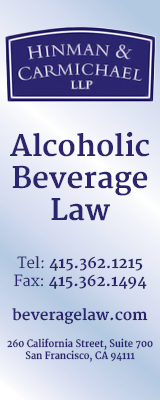FREE! Subscribe to News Fetch, THE daily wine industry briefing - Click Here
![Banner_Xpur_160x600---Wine-Industry-Insight[63]](/wp-content/uploads/Banner_Xpur_160x600-Wine-Industry-Insight63.jpg) |
 ALSO SPONSORED BY: 
Wine Industry Insight |
 |
No, Chlorpyrifos was not invented by Nazis and is not related to Zyklon B
When writing about scientific topics, it is vital to go to original, credible sources.
Neither this recent Register article nor many other ill-documented articles cite original and credible sources. And all of them are wrong.
Zyklon B
First of all, Zyklon B is hydrogen cyanide.
It has been used as a pesticide (among other things), and is now used in the manufacturing of plastics and other products.
A bit of history is here: Chemical Warfare Agents and Zyklon B.
Zyklon B’s chemical structure is Carbon, bonded to Hydrogen and triple-bonded to Nitrogen.

Chlorpyrifos
On the other hand, chlorpyrifos is an organophosphate compound whose generic chemical structure looks like this:

And specifically:

We need to recall that the now-banned DDT is also an organophosphate and played a key role in Rachel Carson‘s book Silent Spring.
There is good evidence that The Germans were instrumental in inventing organophosphates but did not use them in combat. Some poison gases were developed by the Nazis are organophosphates, but not all.
There are many good reasons that Chlorpyrifos — invented by Dow Chemical in 1965, and patented in 1966 — should never have been approved by the government. Ditto other organophosphates.
Nevertheless, Chlorpyrifos and Zyklon B are not even distant chemical relatives.
Authors are ethically bound to rely on the best, original reliable sources and do some Googling (especially scholar.google.com for scientific sources.)




